Apple Watch vs Garmin: how to choose the right smartwatch for you Garmin vs Apple Watch
Apple and Garmin are two of the biggest names in wearables. If you’re after a smartwatch, running watch or a fitness tracker, these two juggernauts of the game are responsible for making some of the best devices that you can strap onto your wrist right now.
There are multiple devices to pick from across the board, especially in the case of Garmin, to make sure you get something that’s a good fit for you. Whether you’re after rich smartwatch features like payments and music, or want to keep much closer tabs on your health and fitness, these two can do it. They may even surprise you with just how much they can do.
The question is, if you have to choose between the two, which should you turn to? Both have their strengths and weaknesses in the hardware and software departments. There are plenty of reasons you’d opt for a Garmin watch and the same can be said about picking up an Apple Watch.
Here’s how the two wearable rivals compare in the key areas to help you make the decision to choose between the two an easier one.
Apple Watch
The first Apple Watch launched six years ago, and with each iteration it’s edged closer to smartwatch domination. Bottom line: if you own an iPhone and want the best smartwatch experience, this is what you should go for.
While you can still find some older versions available from third party retailers, there are three different models that now officially make up Apple’s Watch family. These are:
All run on the latest version of Apple’s watchOS to offer the best on-watch experience. You can download third party apps, make use of Apple’s new Fitness Plus platform, connect to exercise equipment through Apple Gymkit, share watch faces and access Apple’s new native sleep tracking app.
The battery numbers Apple attaches to its smartwatch haven’t changed since the first Watch. You’ll get 18 hours, which is less than a day. This does invariably depend on what features you regularly use, whether that’s using built-in GPS to track outdoor activities and keeping the display nice and bright. If you’ve got a newer Watch that offers the always-on display mode, that will hit the battery harder too.
The Apple Watch certainly has the capacity to go longer than that 18 hours and its stamina has improved over generations as Apple better optimises its watchOS software. If you want a week away from the charger though, that’s just not going to happen yet.
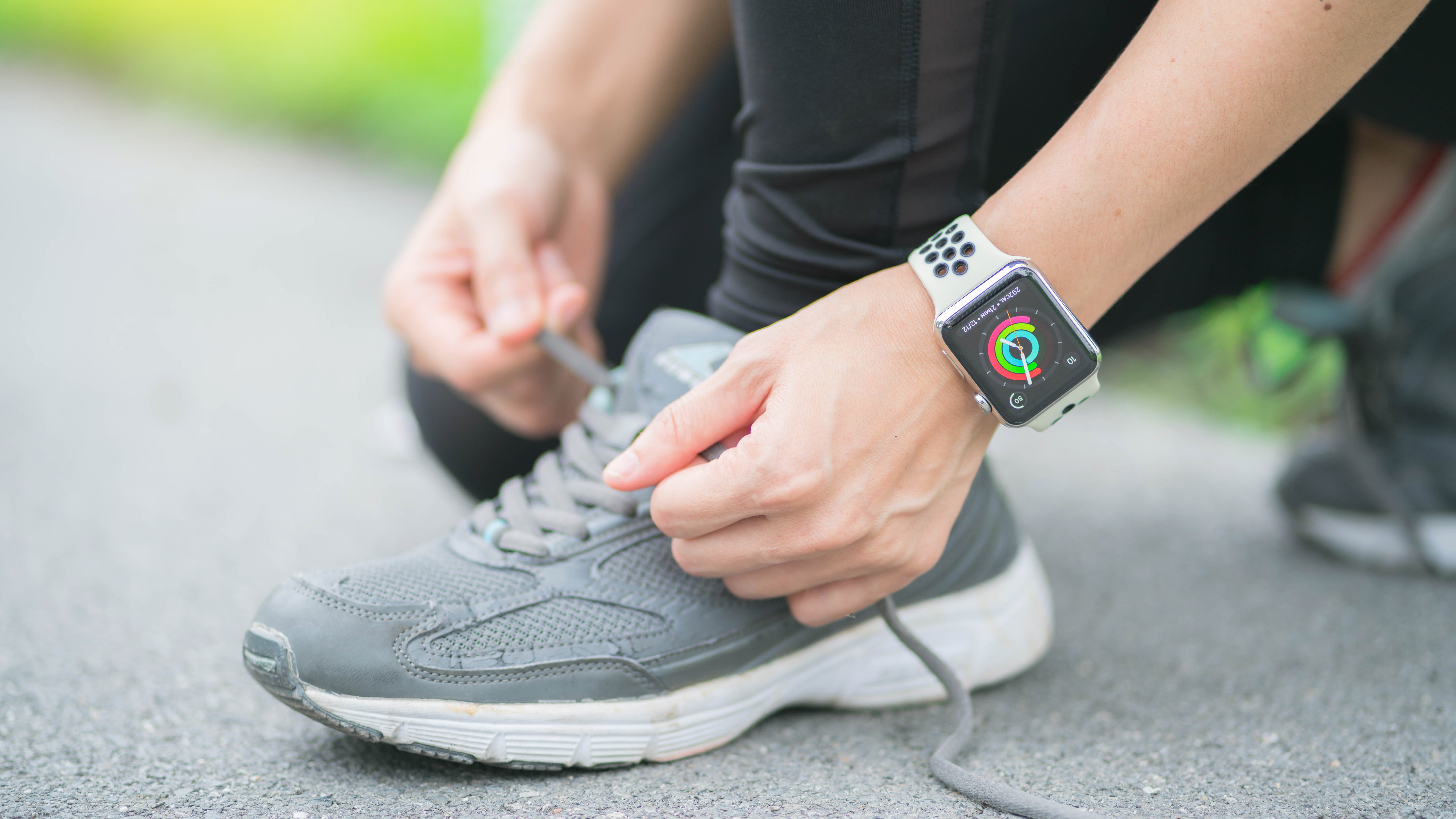
Fitness features
The Apple Watch is probably best known for closing your Rings, but it can do far more than that when it comes to tracking activities, and monitoring your health and fitness.
If you're most interested in the kind of activity tracking you’d associate with a Fitbit device, you'll be pleased to know that an Apple Watch can count your steps, measure distance covered and make it easy to keep track of daily progress. The always-on altimeter on the newer Series 6 and SE will track floors climbed. You burn more calories climbing stairs and that altimeter is useful if you like hiking at altitude too.
Tracking sleep has been possible on the Apple Watch for a while through third party apps, but now Apple offers its own native Sleep app. It’s a little more on the basic side than what its competitors currently offer, but should evolve to offer much richer insights over time.
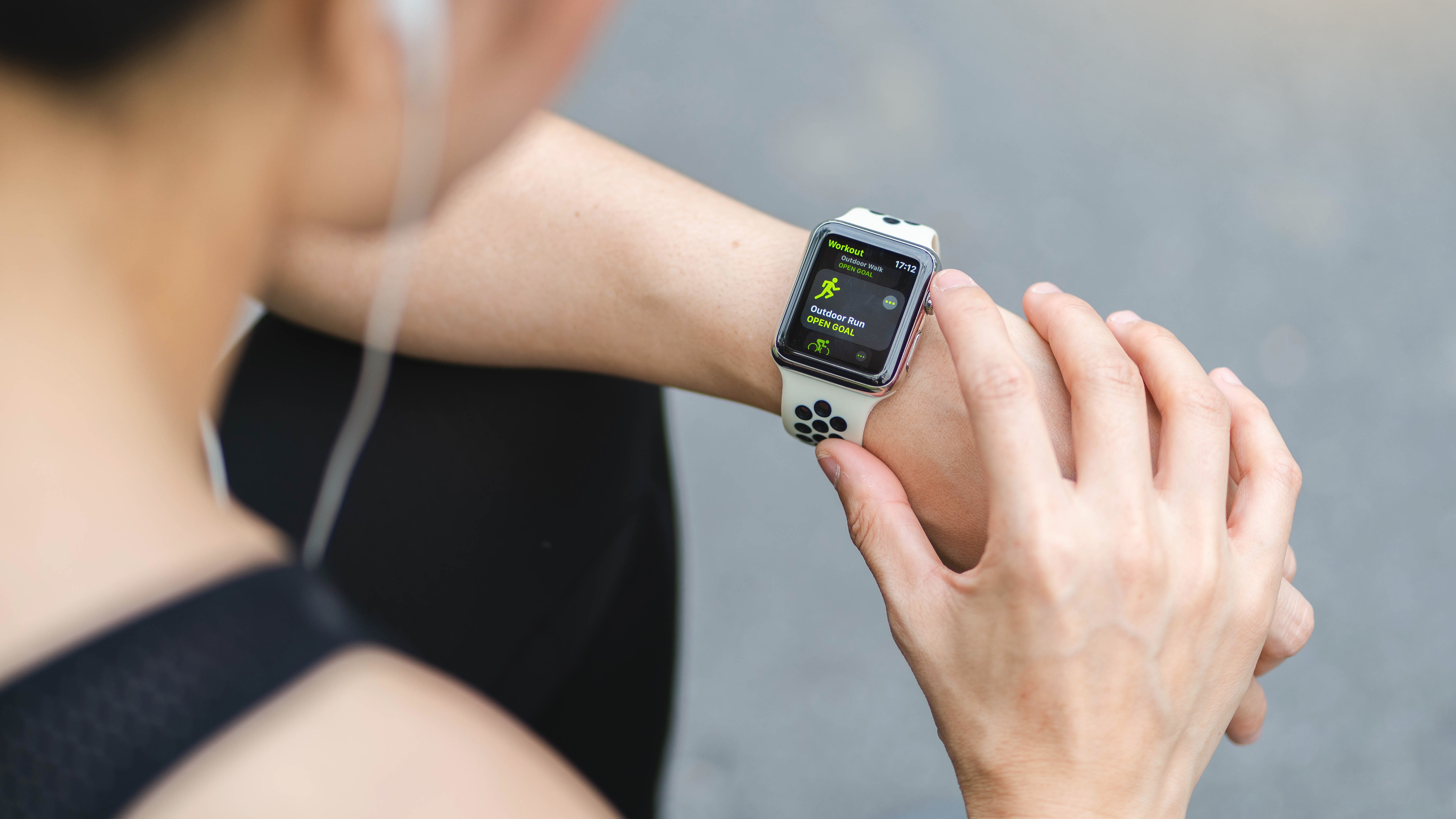
Look beyond basic fitness tracking and you have all the tools at your disposal to log exercise too. There’s built-in GPS across models that locks onto a signal nice and quick and crucially, offers reliable data. Whether you use Apple’s own Workout app or a raft of third party apps that are available through the App Store, you’ve got plenty of scope to track runs, rides and more.
If you prefer life in the water, the latest Apple Watches all offer the same 50m water resistance rating with dedicated pool and open water swimming modes that make them reliable companions to get in the water with too.
That Workout app has evolved to offer greater tracking support for activities outside of the likes of running, cycling and swimming too. If you’re into your dancing to stay fit, watchOS 7 introduced the ability to better track movements and core metrics when you’re busting a move.
Apple has bolstered its fitness tracking prowess with the introduction of its Fitness+ platform that’s closely integrated with the Apple Watch. The paid-for service lets you participate in workout classes along with your iOS device, tracking heart rate metrics and showing you how much you’re eating into those Rings. Apple Fitness Plus is available as a free trial with a new Apple Watch, and costs $9.99 / £9.99 / AU$14.99 a month thereafter.
Pricing
So with the arrival of the Apple Watch SE and focus on the three models that Apple currently stocks, you have three Watches and three different price points.
The Apple Watch Series 3 is the most affordable option and will give you the same core experience you’ll get on the Series 6 and the SE. You will miss out on things like the improved heart rate monitoring sensor technology, the smaller case and screen sizes, the always-on display mode and the improved GPS performance you’’ll get on newer Watches. It also lacks sensors like ECG and the pulse oximeter.
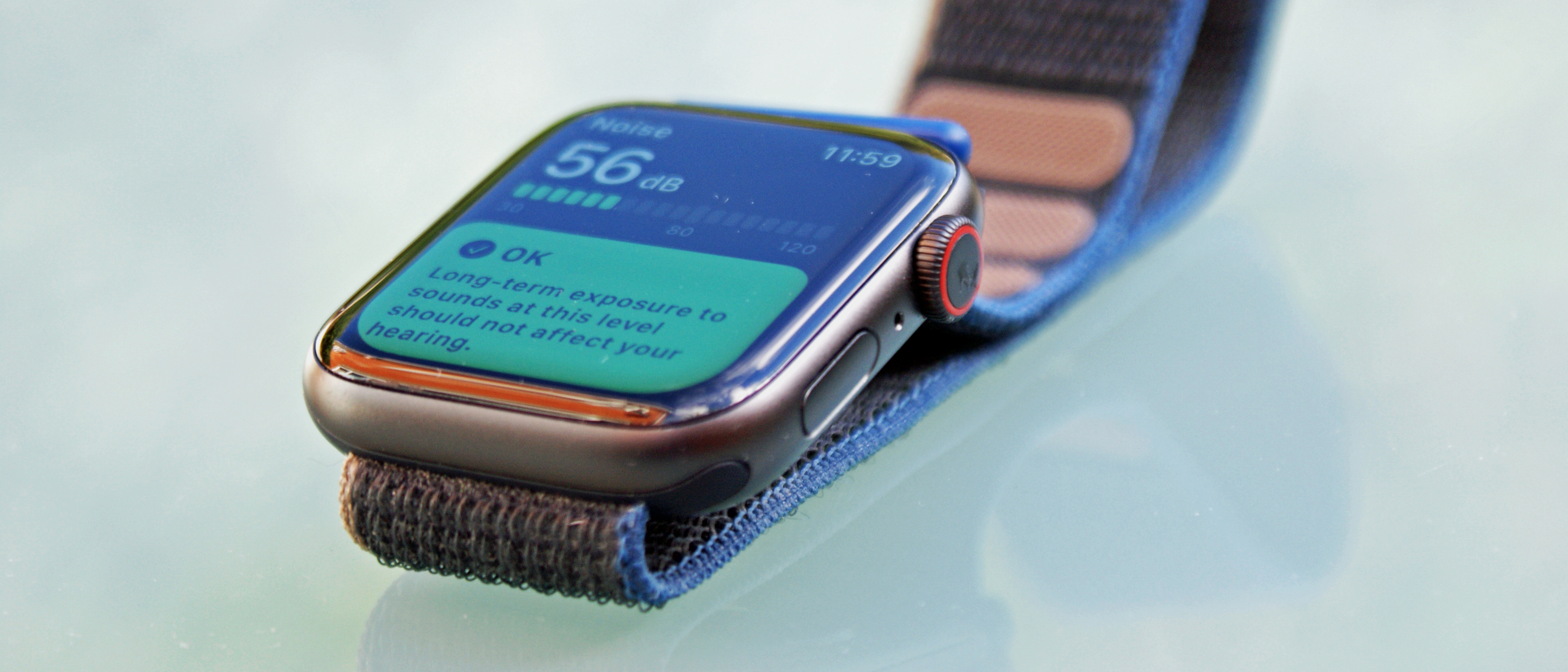
With the Series SE, you’re getting something that matches the Series 6 in most ways, but loses those ECG and pulse oximeter sensors too. Everything else from a fitness tracking and sports tracking remain intact including that improved optical heart rate and GPS accuracy upgrade.
With the Series 6, you’re getting the best that Apple has to offer. The big wins over the Series 3 and the SE is the presence of ECG and a pulse oximeter. The former makes it a more valuable serious health monitoring tool, while the latter gives you another way to gauge your current state of fitness. It’s not being used for serious health monitoring yet, but that could well change in the future.
Garmin
Garmin has been making wearables for many, many years (and long before Apple entered the scene). Its original focus was helping people to better navigate their surroundings, and its devices have evolved to also become great companions for tracking sports like running, cycling and swimming.
Garmin makes sports watches that also merge smartwatch features with the ability to track your exercise. It also makes dedicated fitness trackers both for adults and children and with the emergence of the Garmin Venu and Venu Sq, it has what you’d call a full-fat smartwatch in its ranks.
Unlike Apple, Garmin plays nice with Android and iOS devices offering support to send your data to an extensive list of third party apps and access its own Connect IQ store to add extra apps, widgets, data fields and watch faces to its watches.
Whether you go for one of its basic fitness trackers or a more feature-rich watch, Garmin seeks to keep the experience as consistent as possible across its range of devices.
Garmin Venu, Venu Sq and Venu 2
The recently released Venu 2 is the watch in Garmin’s range that you should view as the company’s answer to the Apple Watch. In our tests, we found it achieved a near perfect balance between everyday smartwatch and fitness features, all delivered on a vivid, high resolution AMOLED screen. Like the Apple Watch, it's available in two sizes, but both are large enough to show a huge volume of data, including graphs, maps, and graphics displaying which muscle groups you've been working recently.
The Venu 2 (and its predecessors, the Venu and Venu Sq, which are both still available) offer features like the ability to make payments and built-in music players letting you store offline playlists on the watch from services like Spotify. The Apple Watch offers similar features, but doesn’t have that Spotify offline support just yet.
They will track your steps and monitor sleep, includes built-in GPS to track outdoor activities and can track your time and movements in a swimming pool too. All of Garmin’s wearables include a heart rate monitor too, and the Venu range also support external chest-strap heart rate monitors to improve accuracy for exercise.
Watches in the Venu line have access to Garmin’s Connect IQ Store, which might not be brimming with apps as Apple’s App Store, but does give you freedom to make your Venu experience more personal.
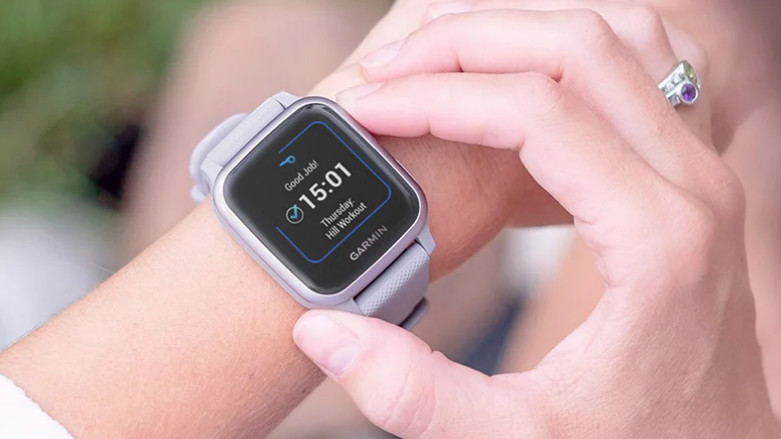
Garmin Fenix 6 series
Garmin's flagship Fenix range are multi-sports watches built for the great outdoors. The latest Fenix 6 is pricier than the Apple Watch Series 6, but does offer more for lovers of hitting the trails or going for a hike. You’ll be able to view topographical maps, rafts of outdoor-centric metrics whether that’s based on your movements or the environment around you. That’s wrapped up in a rugged design that’s built to make sure it can withstand the harshest elements.
It comes in three sizes, which means there are better options for those with slimmer wrists, or those who like the feel of a tough, chunky watch on their wrist.
Along with giving you the best that Garmin has to offer in fitness tracking and sport tracking, it also adds in smartwatch features like the ability to view notifications, make payments, pile on music and also has access to Garmin’s Connect IQ Store.
While it lacks the vibrant color display you’ll find on an Apple Watch or even the Garmin Venu, its screen is better designed to be viewed in bright outdoor light. It also helps boost a battery life that can go for weeks, even with extensive use of features like GPS and heart rate monitoring.

Battery life
The battery performance on Garmin watches and fitness trackers varies. Crucially though, most if not all have the capability of getting you through a week without charging. The Venu for instance, can last up to five days, though that does drop to two days if you use the screen in always-on mode.
The Fenix 6 meanwhile has the capacity to last for around nine days, and has power saving modes to keep it running for up to 80 days if you go for the top end model. Opt for the solar power version and that’ll give you an extra battery boost on top of some pretty big numbers already.
Fitness features
For pure fitness tracking, Garmin manages to keep this relatively consistent across its range of devices. You can track steps, automatically monitor sleep albeit with mixed results on the accuracy front.
There’s support to track heart rate continuously or during exercise and many Garmin watches and trackers include a pulse oximeter sensor. Like Apple, this is used for general fitness and wellness insights but can also additionally track oxygen levels during sleep and offer an insight into acclimatising to being at high altitude.
Most devices use the onboard heart rate monitor to unlock stress tracking, which is joined with guided breathing exercises much like what’s available on the Apple Watch. Garmin’s Body Battery monitor also keeps close tabs on your biometric data, sleep and daily activity to assess your energy levels. That’s designed to let you know whether you’re equipped for a full-on day or you should plan to take things easy.
Apple Watch or Garmin
Picking between the two really boils down what you want from a connected watch. If you’re an iPhone user and you want a good mix of smartwatch and sports and fitness tracking features and having a nice colour display is priority for you, then the Apple Watch is probably the one for you. Ultimately, it’s giving you the slickest software experience around and features like viewing notifications, payments and app support just works better than it does on most other watches.
Its fitness tracking and sports tracking abilities have come on leaps and bounds over the last few iterations. Closing those Rings can become addictive and tracking outdoor activities and exercises like swimming is up there with some of the best sports watches for performance.
If you care about serious health monitoring, this is where Apple really has the upper hand over Garmin. While Garmin has the capacity to offer similar features and insights, the introduction of ECG and the features Apple has built around monitoring your heart health in general is just far more polished, insightful and potentially lifesaving.

The kind of person who should be going for a Garmin watch is somebody that cares a little more about having those richer sports tracking features and significantly more battery life than what the Apple Watch can currently offer.
There are so many Garmin watches in its range, but whether you for for a Forerunner 245, Venu or a Fenix you can be assured that they’re going to offer a robust tracking experience where core metrics will be on the whole reliable and you’re going to have plenty of data to dig into during and post exercise. You can also expect to spend a decent amount of time away from the charging cable too.
You do still get plenty in the way of smartwatch features across the range with more complete experience on offer for Android phone users. Especially if you like the idea of responding to notifications. That offline playlist support for multiple services including Spotify will no doubt be a pull for some as well.
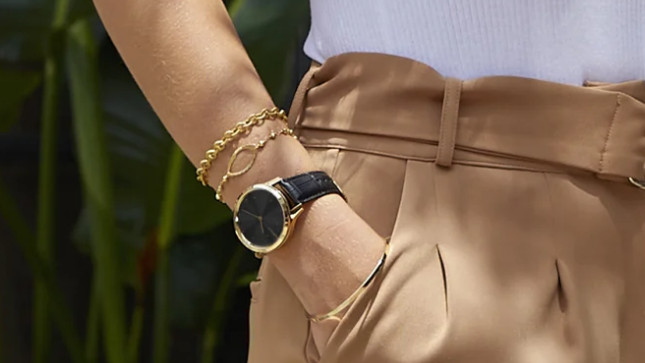
Garmin’s software on the whole can be a tad clunky in places, and is an overwhelming place if you’ve never used a Garmin before. That being said, it’s emerged as one of the best options if you’re seeking out a sportier smartwatch experience.
Bottom line, these are two great platforms making great watches that are packed with features. There’s plenty of reasons to go Apple Watch, but there’s also a strong argument that a Garmin may well be a better fit for a lot of people too.

